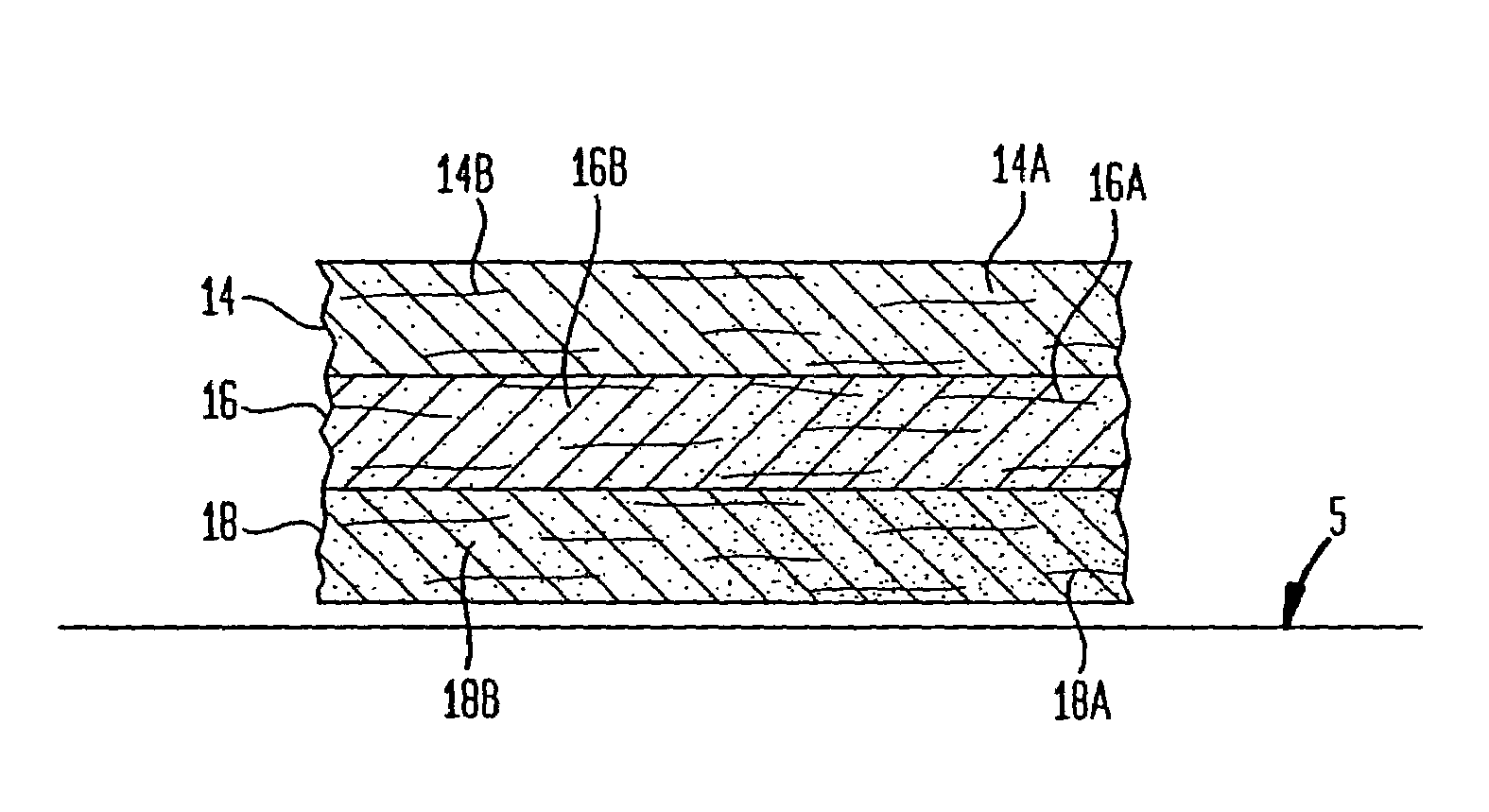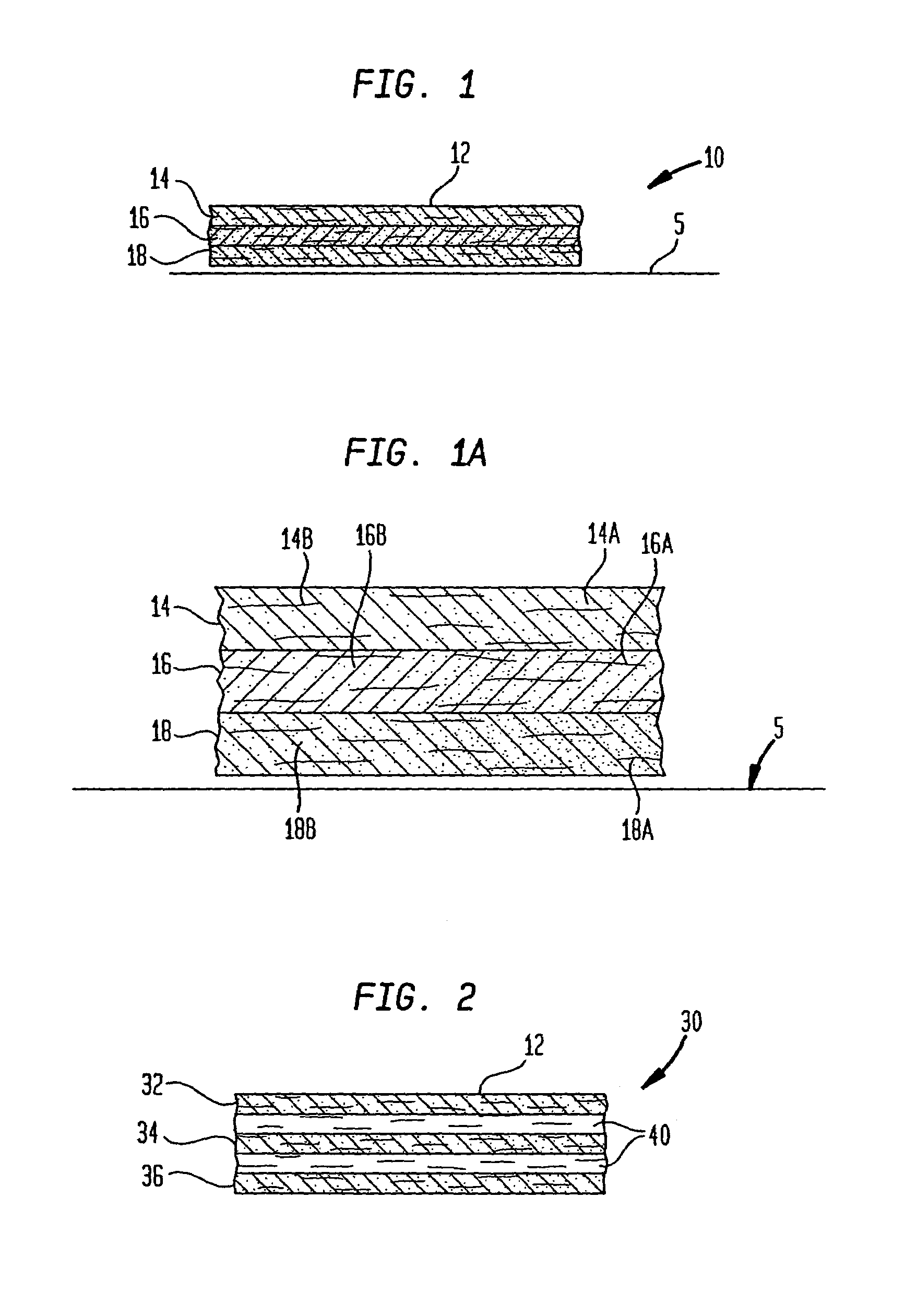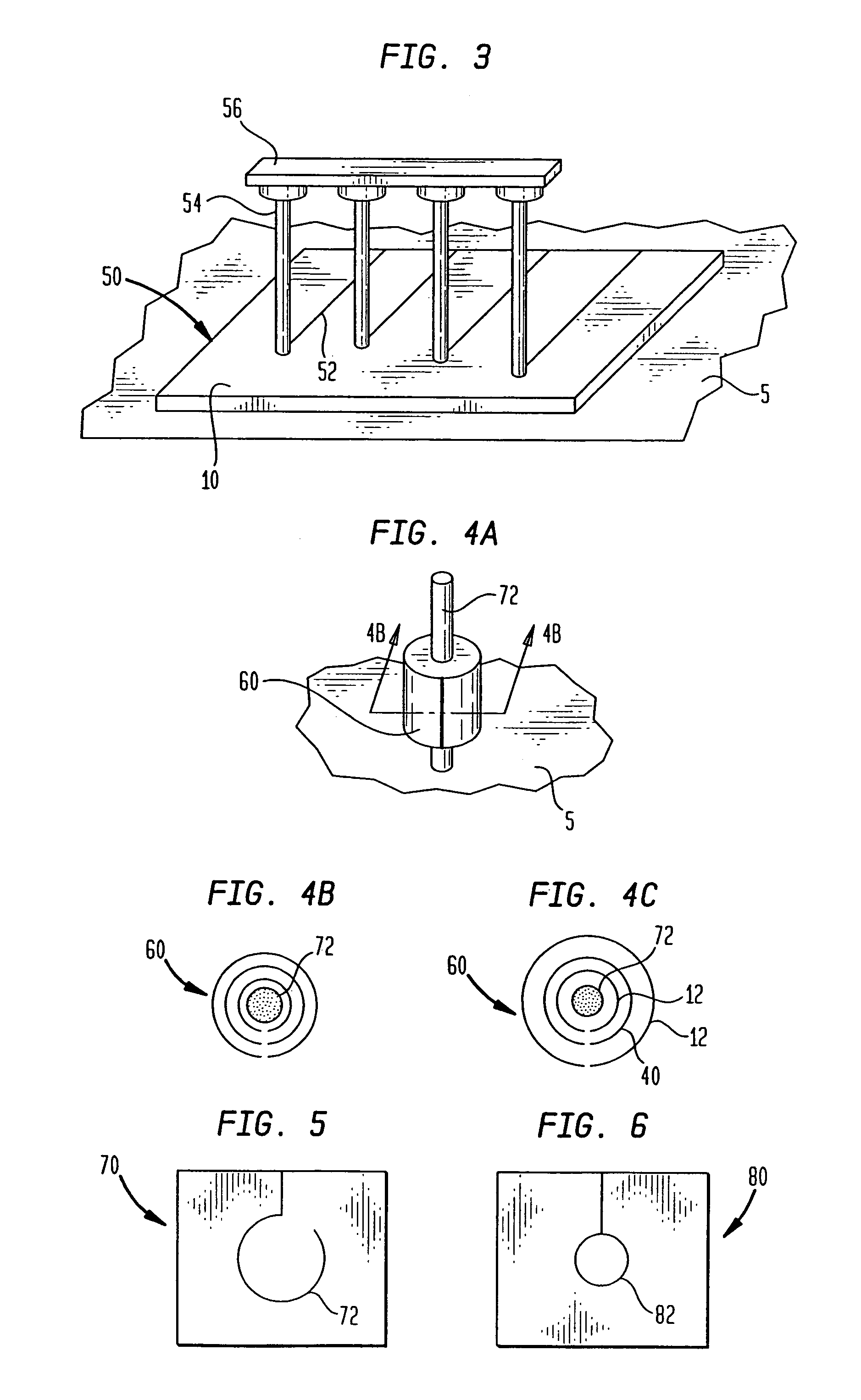Multilayer conductive appliance having wound healing and analgesic properties
a multi-layer, conductive technology, applied in the direction of catheters, bandages, transportation and packaging, etc., can solve the problems of lack of appropriate electrical signals, failure of normal healing process, and limited published research on the role of generated electrical potentials in the healing process, so as to improve the degree of control, improve the effect of silver ion migration and improve the pain relief characteristics of the dressing
- Summary
- Abstract
- Description
- Claims
- Application Information
AI Technical Summary
Benefits of technology
Problems solved by technology
Method used
Image
Examples
example 1
Laminate of Alternative Layers of Silver and DelNet®
[0098]A dressing material was made of three layers. The layer that was against the bacterial culture called “SN” was 100% silver plated nylon woven in a pattern called “warp knit” with individual 15 denier fibers. The next layer, “DK2”, was a non-woven 2 oz fabric composed of a mixture of 25% three denier silver plated fibers and 75% three denier rayon fibers. The third layer, “DK8”, was a non-woven 8 oz. fabric composed of a mixture of 5% three denier silver plated fibers and 95% three denier rayon fibers. The layers were laminated by needle punch. The ratio of the silver to nonmetalized fiber was as follows for each layer:
[0099]
Layer 1100% silver nylonLayer 2 25% silver nylon to 75% nonmetalized fibersLayer 3 5% silver nylon to 95% nonmetalized fibers
[0100]The purpose of this Example is to determine the effectiveness of Silver Nylon Fabric Type “SNDK2DK8” with Antimicrobial Disk Susceptibility Testing against four primary organis...
PUM
| Property | Measurement | Unit |
|---|---|---|
| surface resistance | aaaaa | aaaaa |
| surface resistance | aaaaa | aaaaa |
| current | aaaaa | aaaaa |
Abstract
Description
Claims
Application Information
 Login to View More
Login to View More - R&D
- Intellectual Property
- Life Sciences
- Materials
- Tech Scout
- Unparalleled Data Quality
- Higher Quality Content
- 60% Fewer Hallucinations
Browse by: Latest US Patents, China's latest patents, Technical Efficacy Thesaurus, Application Domain, Technology Topic, Popular Technical Reports.
© 2025 PatSnap. All rights reserved.Legal|Privacy policy|Modern Slavery Act Transparency Statement|Sitemap|About US| Contact US: help@patsnap.com



